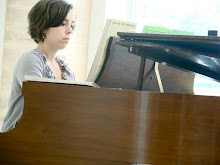The nineteenth century saw an expansion of society (political, social, and industrial advances) that had significant impact on the lives of musicians and the music that they wrote. Mechanical inventions of the eighteenth century were expanded upon, such as those of transportation and communication, both of which aided in furthering the music industry. As music became more widespread and readily available, the public concert genre soared to new heights. Audience sizes grew, and performance halls and theaters instituted promotional procedures such as memberships and subscription concerts. The increase in recitals stimulated music sales, which in turn helped to improve publishing. This expanding market gave rise to new developments in instrument manufacturing and distribution, which led to more demand for teachers and performers. As a result, conservatories were founded in every important city in the nineteenth century.
These developments were accompanied by rapid change that created problems and tension for some. Composers turned to folk idioms as a means to escape from the ever-changing reality in which they now lived. This was a way for composers to promote music and melodies that were characteristic to their own countries - evidence of the beginnings of nationalism.Patronage served a different role than it had in the previous century. With the rise of the solo virtuoso as well as a larger, more educated audience, patrons no longer had the same control over the types of music that were written, as they did in the Baroque and Classical eras. The growing concert attendance gave composers the freedom to compose whatever they pleased.
With the Revolution period of the nineteenth century came the rise of the individual and increased political and social freedom. It was at this time that music began to be composed as independent art works just for the sake of being art.
If you think about it, at the structure of our present society, not a whole lot has changed since the nineteenth century. Advances in technology continue to be made, but now at a rate so rapid that we have become obsessed with it. Machines have become so precise that they are beginning to destroy the work force (grocery store self-check outs ring a bell?). Never mind cell phones - they are slowly starting to control our lives. How many people do you think cannot go a day without their phones? I feel bad for that person in the restaurant whose date is talking on his bluetooth during dinner!
I imagine that factory work in the nineteenth century must have been pretty wretched. Difficult labor, tiring, long hours.... But someone had to do it, and it was for the benefit of the rest of society that these people labored. Think about the war that we are experiencing right now. I haven't the words to try to describe what our soldiers are dealing with for the benefit of the rest of society, but someone has to do it. I can't think of anything else more noble.
If you think about it, at the structure of our present society, not a whole lot has changed since the nineteenth century. Advances in technology continue to be made, but now at a rate so rapid that we have become obsessed with it. Machines have become so precise that they are beginning to destroy the work force (grocery store self-check outs ring a bell?). Never mind cell phones - they are slowly starting to control our lives. How many people do you think cannot go a day without their phones? I feel bad for that person in the restaurant whose date is talking on his bluetooth during dinner!
I imagine that factory work in the nineteenth century must have been pretty wretched. Difficult labor, tiring, long hours.... But someone had to do it, and it was for the benefit of the rest of society that these people labored. Think about the war that we are experiencing right now. I haven't the words to try to describe what our soldiers are dealing with for the benefit of the rest of society, but someone has to do it. I can't think of anything else more noble.
